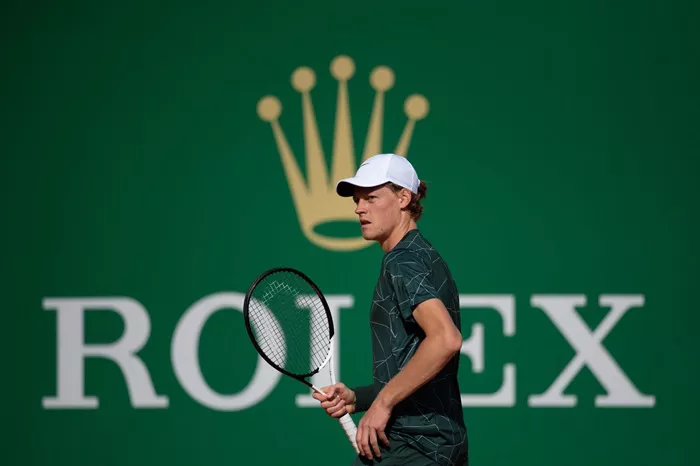When Iga Świątek and Carlos Alcaraz lifted their trophies on the iconic clay courts of Roland-Garros last year, the Rolex emblem gleamed prominently on their wrists—a striking contrast to the traditional terry-cloth sweatbands once ubiquitous in tennis. This image captures more than a fashion statement; it epitomizes Rolex’s deep-rooted presence in the world’s most prestigious tennis events.
Since 2019, Rolex has been the official timekeeper of the French Open, succeeding fellow Swiss watchmaker Longines and completing its sponsorship of all four Grand Slam tournaments. Today, the courts of Roland-Garros are adorned with Rolex’s signature green signage and gilded clocks, underscoring the brand’s seamless integration into the fabric of professional tennis.
“Rolex and tennis have become almost inseparable, thanks to the brand’s extensive assets and consistent investment,” explains Ricardo Fort, founder of Sport by Fort Consulting and a former global sponsorship lead at Visa and Coca-Cola.
What began as a focus on brand visibility and timekeeping has evolved into a “strategic alliance,” according to Arnaud Delaplace, partnerships director at the Fédération Française de Tennis, which organizes the tournament. “Rolex is an integral part of the Roland-Garros experience, grounded not just in branding but shared values and mutual elevation,” he notes.
Rolex’s affiliation with tennis reflects a broader luxury marketing strategy that taps into the aspirational power of sports. Beyond tennis, the brand has cultivated decades-long ties to golf, yachting, motorsports, and equestrian events. Its pioneering use of athletic feats in advertising dates back to the 1920s, notably when Mercedes Gleitze swam the English Channel wearing a Rolex Oyster, branded as “the wonder watch that defies the elements.”
Yet, the transformative moment for Rolex’s identity came in the 1960s with its collaboration with New York agency J. Walter Thompson. Rather than solely promoting technical precision, the campaign shifted to appeal to customers’ aspirations of personal excellence and heroism. Iconic advertisements paired images of sailing, skiing, and racing with evocative copy such as: “If you were here tomorrow … you’d wear a Rolex.” This strategy brought sports stars like golfer Arnold Palmer and skier Jean-Claude Killy into Rolex’s fold, not as mere product endorsers but as embodiments of the brand’s values.
Pierre-Yves Donzé, business history professor at Osaka University, explains, “Palmer didn’t wear the watch to improve his game—in fact, he never wore it on the course. Instead, his charisma and excellence made him a living symbol of what Rolex stands for: status and achievement, not just function.”
This lifestyle-oriented branding propelled Rolex to the forefront of the luxury watch industry. Today, it commands over 32% of the Swiss watch market, with estimated 2024 sales surpassing one million timepieces and revenues around 10.6 billion Swiss francs ($12.86 billion), according to Morgan Stanley.
Rolex’s challenge remains balancing exclusivity with broad appeal—a balance tennis naturally provides. The brand also maintained a decade-long role as Formula One’s official timekeeper until recently, when TAG Heuer replaced it as part of a lucrative, multibrand deal with LVMH.
“The fact that TAG Heuer and LVMH pursued the F1 partnership after Rolex’s long tenure demonstrates the brand’s success in sports marketing,” says Brendan Cunningham, economics professor and author of Selling the Crown: The Secret History of Marketing Rolex.
While Formula One’s expanding audience and new sponsors bring growth, Rolex’s strategic priorities may have shifted. TAG Heuer, known for its motorsport heritage and more accessible price point, now leads the F1 sponsorship, gaining exposure through title sponsorship of the Monaco Grand Prix.
The competition for sports partnerships is fierce, but Rolex’s focus on individual sports creates unique opportunities for athlete-driven narratives. Breitling has begun filling a gap in team sports, launching an NFL collection in 2024 that marks a significant entry into the American market.
For brands, sports sponsorships offer accelerated awareness and storytelling. Rolex’s newly launched documentary series highlights the journeys of tennis stars like Coco Gauff and Carlos Alcaraz, blending archival footage and intimate interviews to build narratives of perseverance and excellence.
At Roland-Garros, Rolex’s presence adds a layer of gravitas and timelessness. “Rolex brings an emotional and symbolic dimension to the tournament, creating an atmosphere that resonates deeply,” says Delaplace.
In the world of luxury branding and sports, Rolex remains a gold standard—an emblem not just of precision timekeeping, but of aspiration, achievement, and enduring legacy.


